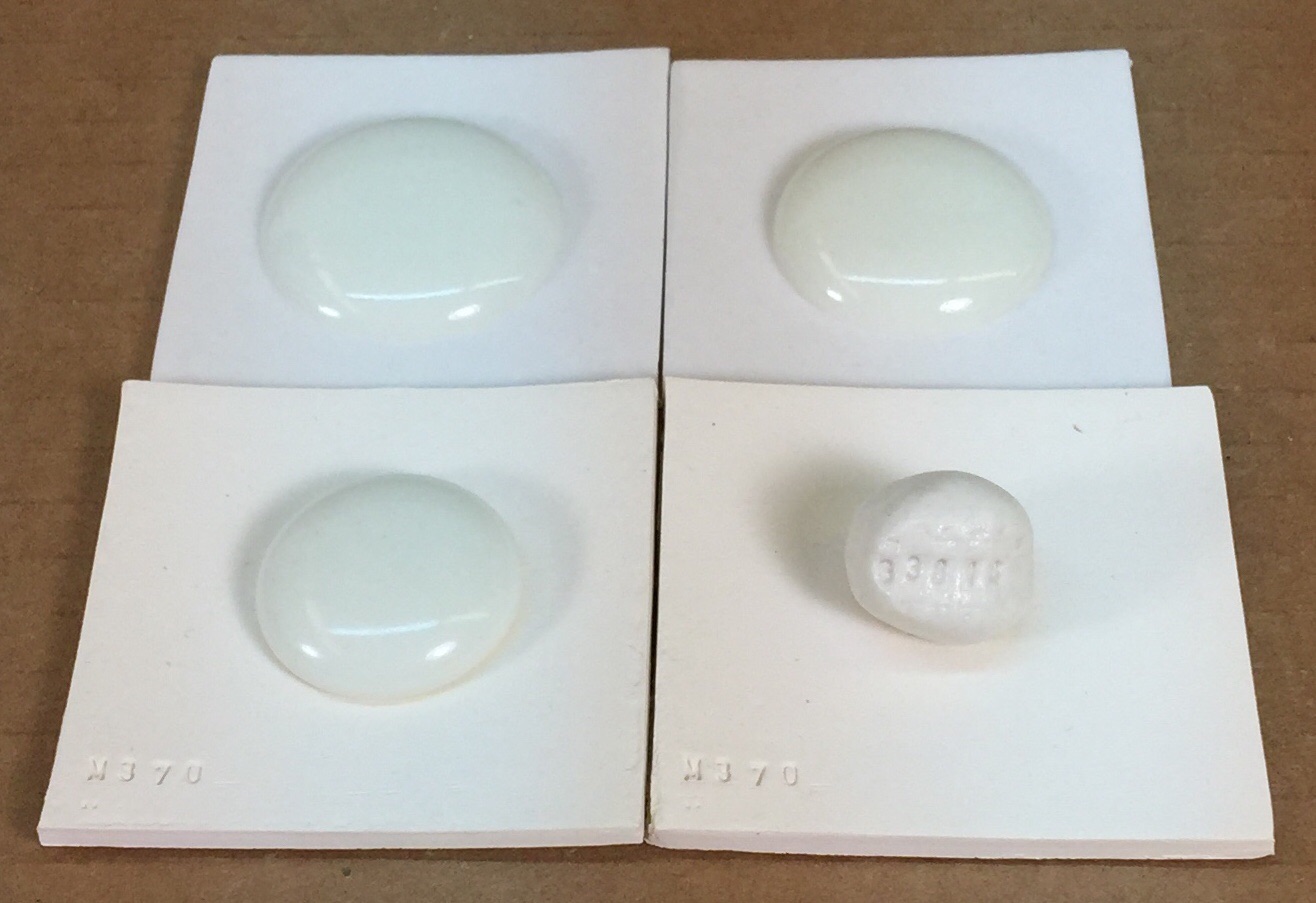Why fast fire glazes employ zinc - a melt fluidity test tells us
We are comparing the degree of melt fluidity (10 gram GBMF test balls melted down onto a tile) between two base clear glazes fired to cone 6 (top) and cone 1 (bottom).
Left: G2926B clear insight-live.com/glossary/129">boron-fluxed (0.33 molar) clear base glaze sold by Plainsman Clays.
Right: G3814 zinc-fluxed (0.19 molar) clear base.
Two things are clear: Zinc is a powerful flux (it only takes 5% in the recipe to yield the 0.19 molar). Zinc melts late: Notice that the boron-fluxed glaze is already flowing well at cone 1, whereas the zinc one has not even started. This is very good for fast fire because the unmelted glaze will pass more gases of decomposition from the body before it melts, producing fewer glaze defects.
Pages that reference this post in the Digitalfire Reference Library:
Zinc Oxide, ZnO, GBMF Glaze Melt Fluidity - Ball Test, Fast Fire Glazes, Melting Temperature

This post is one of thousands found in the Digitalfire Reference Database. Most are part of a timeline maintained by Tony Hansen. You can search that timeline on the home page of digitalfire.com.
